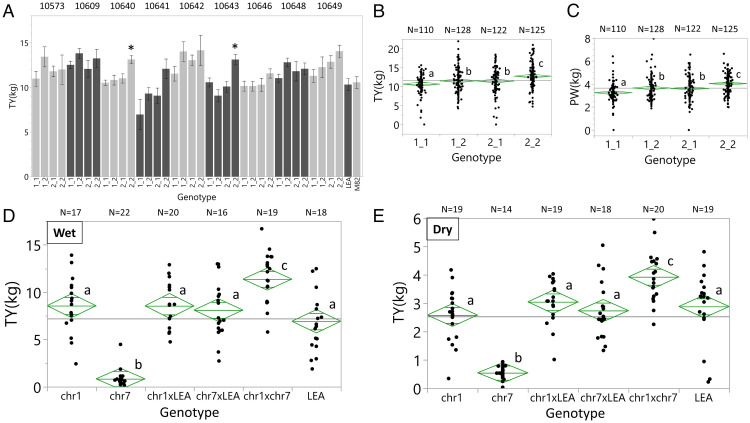Fig. 4.
Epistatic QTLs for yield heterosis. (A) A LEA background hybrid heterozygous for the QTLs on chromosomes 1 and 7 was crossed to nine different processing tomato inbreds to produce progenies of four genotypic groups, which were assayed for TY in Akko 2021. TY of the double heterozygous hybrids (2_2) with inbreds 10,640 and 10,643 was significantly higher than that of the other genotypes (5% level based on the Tukey–Kramer test). (B) A test of the pooled TY from all the nine genetic backgrounds (Fig. 4A) shows that the double introgression hybrids had the highest yield of the four genotypes. Means with the same letters are not significantly different at the 5% level based on the Tukey–Kramer test. (C) A test of the pooled PW data from all the nine genetic backgrounds shows that the double introgression hybrids had the largest PW. Means with the same letters are not significantly different at the 5% level based on the Tukey–Kramer test. (D and E) To test whether the epistatic QTLs on chromosomes 1 and 7 drive yield heterosis, we selected two homozygous BILs, each carrying a single QTL, and crossed the two BILs to LEA and to each other. The yield of the two BILs, their hybrids with LEA, and the double introgression hybrid was tested in Akko 2020 in well-irrigated conditions (D) and in drought (E). Means with the same letters are not significantly different at the 5% level based on the Tukey–Kramer test.

